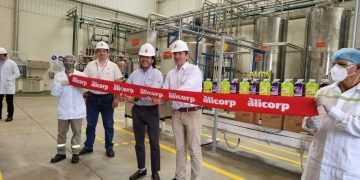Crédito: fuente
The federal government enacted a compensation program for «downwinders,» those who lived near the Nevada Test Site and suffered cancers linked to radiation from the nuclear blasts. However, unlike residents in other parts of Arizona, Nevada and Utah, the residents of Kingman and lower Mohave County have never been compensated by the federal government.
Lower Mohave County residents don’t know why the federal government left them out of the 1990 Radiation Exposure Compensation Act, known as RECA. Neither do lawmakers who’ve fought for years to broaden the program. With RECA scheduled to end in 2022, they say, it’s urgent to include residents like Stephens and her neighbors and relatives.
«We want to make sure that all of the families impacted are appropriately recognized and compensated,» said Rep. Greg Stanton, D-Ariz., who along with Rep. Paul Gosar, R-Ariz., introduced legislation this year that would expand RECA to include all of Mohave County, as well as Clark County, Nevada, most of which was also left out of the compensation program.
«They suffered so that we could advance American defense systems at the time that we were testing nuclear missiles, and now we owe it to them to do our part to make sure that they are recognized, acknowledged and compensated,» Stanton said.
Stephens spent more than a decade as the president of the Mohave County Downwinders, sending letters to legislators and collecting personal stories. She hopes she and other downwinders can see those changes in their lifetimes.
«We fought so long for so many years,» she said. «I want it resolved.»
The dangers and fallout of atomic testing were unknown to the public when testing began at the Nevada Test Site, now known as the Nevada National Security Site. One hundred of the nuclear tests at the site from 1951 to 1962 were above ground.
Stephens said getting a glimpse of the flashes or enormous mushroom clouds was a form of entertainment. Detonation times and dates were advertised in newspapers. Children were given short recesses on testing days to stand in the schoolyard and to watch the explosions turn the sky orange. In Las Vegas, only 65 miles from the testing site, businesses billed the tests as tourist attractions to view from hotel windows.
Stephens recalls that as a teenager in 1953, she, her father, her uncle and her brother rode on horseback into the Aquarius Mountains to get a better view of one of the nuclear explosions. As they watched the plume shoot into the sky, they could feel the wind blow the smoke and dust toward them. They hurried to get off the mountain, trying to escape the fallout. But by the time they returned home, their clothes were coated with oily pink stains, Stephens said.
«So about everyone up there got cancer,» she said. Her father died of colon and kidney cancer. Her brother, who is still alive, was diagnosed with prostate cancer. Colon cancer, which Stephens is also diagnosed with, is covered under RECA.







